In arguably the most important Clásico in many years, Real Madrid emerged victorious with their first La Liga Clásico victory since 2016 and their most recent at the Estadio Santiago Bernabéu since 2014. Barcelona returned to Catalonia a point behind their rivals with 12 games to play after a frustrating evening in the Spanish capital.
After an intense and end-to-end encounter in the first period, Real Madrid emerged far more threatening in the second half as they began to establish their foothold in the game. Vinícius Junior would be the man to open the scoring as his effort deflected off the leg of Gerard Piqué and would give Real Madrid the lead, becoming the youngest ever non-EU player to score in a Clásico, taking that record from Barcelona’s very own Lionel Messi. Mariano Díaz would later come on as a late substitute to alleviate the pressure on his teammates, something he did to perfection as he doubled the lead within just 52 seconds of coming on in a stunning first La Liga appearance of the season.
This tactical analysis will consider the tactics used by Zinedine Zidane and his counterpart Quique Setién. This article will provide analysis of the tie. This La Liga fixture could have major complications for both Real Madrid and Barcelona come the end of the season as this tactical analysis will demonstrate.
Line-ups
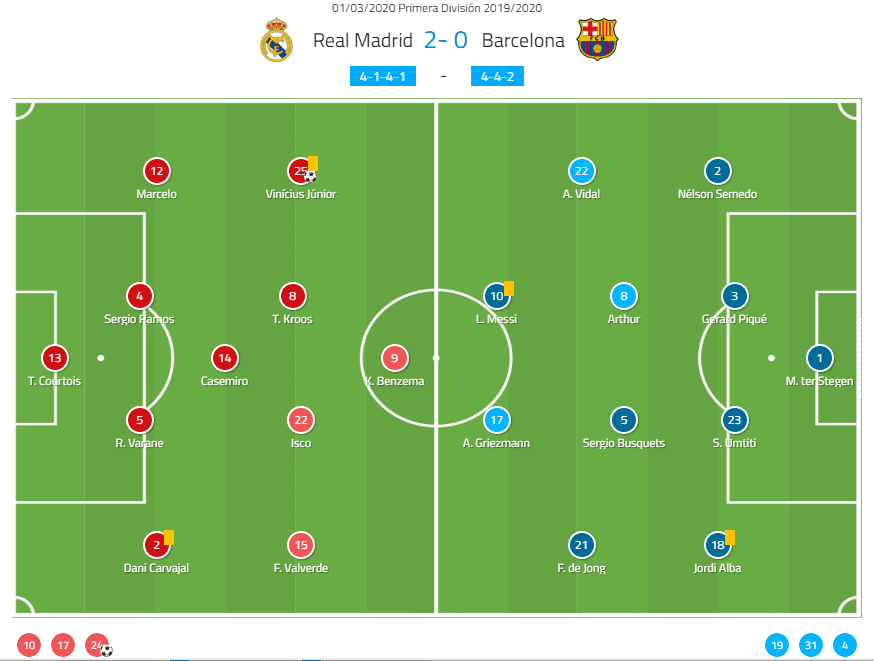
Zinedine Zidane sprung a surprise by selecting Marcelo ahead of Ferland Mendy at left-back, with an otherwise expected line-up seeing Toni Kroos return with Luka Modrić dropping to the bench. Isco also kept his place in the side in attacking alongside Vinícius and Karim Benzema. On the bench, Mariano beat Luka Jović to a place in the squad.
Barcelona boss Quique Setién faced one major dilemma which was in attack as he opted to play Arturo Vidal ahead of recent signing Martin Braithwaite. Jordi Alba also made a comeback after an injury lay-off, Junior Firpo being the man to give up his spot in defence to make way.
Real Madrid’s press
What was most intriguing about this encounter was the pressing tactics deployed. Typically, Real Madrid have deployed a high pressing approach but have struggled to maintain it throughout a sustained period. Against Barcelona, they did just that and with brilliant results for Zidane. This was particularly evident in the second half as Real Madrid refused to allow Barcelona as much patience to build up possession as in the first half. Whereas their formation line averaged 51.3 metres up the field in the first period, they pressed on to 57.4 metres in the second and also increased their pressing intensity with a remarkable turnaround, allowing only 7.3 passes per possession as opposed to 31.2 in the first half.
It all started by looking to cut out the move at its source. Real Madrid deployed a man-to-man approach high up the field on Barcelona’s midfield and defenders, also using Benzema to apply pressure to Marc-André ter Stegen in order to force him into long passes. That helped Real Madrid to keep Barcelona penned into their own half, not allowing them out by forcing them into mistakes before they could mount any form of attack. The result was dominance for Real Madrid which helped them to build momentum and eventually take the lead.
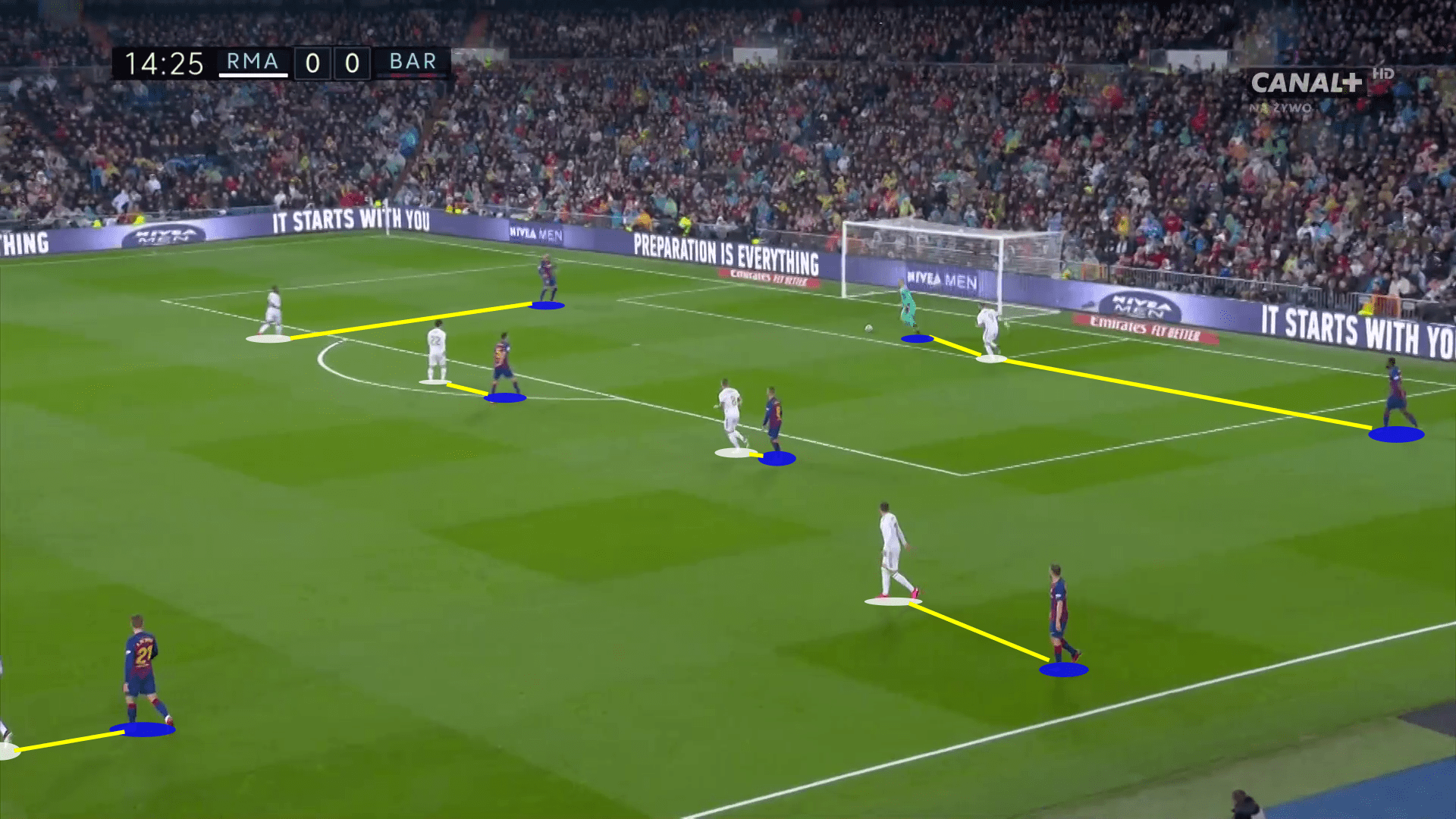
The approach also helped to stretch Barcelona, forcing their men to go wide but also regularly relying on the central channel. This made their play predictable and easy to cut out, with Casemiro, Kroos and Fede Valverde happy to come into the middle and cut out the possession. Whilst Arthur and Frenkie de Jong are usually fairly press resistant, they struggled under such persistent and high pressure. Equally, they struggled to maintain it themselves, with the Catalan’s pressing intensity dropping gradually throughout the second half as their play faded.
Vinícius’ role
Beyond simply scoring the goal which broke the deadlock, albeit with a fortunate deflection, Vinícius played a crucial role in the tactical system that Zidane deployed. Completing 12 dribbles and 10 progressive runs, he was one of few players who was happy to get at Barcelona’s defenders. Such energy was particularly important in boosting morale after the midweek defeat at Manchester City and also boosted momentum, with players believing in themselves more as Barcelona were left shell-shocked by Vinícius’ pace and direct style, a role that is distinctly absent in Setién’s team.
It was also crucial as it brought over several Barcelona players. Vidal and Sergio Busquets were often both drafted in so that they could provide further support for Semedo and prevent Vinícius from beating his man and finding himself in on goal. That alongside the distraction provided for Piqué meant that with four players focused on him, spaces opened up for his attacking team-mates as can be seen in the image below. This meant that whilst Vinícius’ deliveries were poor, completing only two of his six crosses, there were opportunities and spaces for the likes of Benzema.
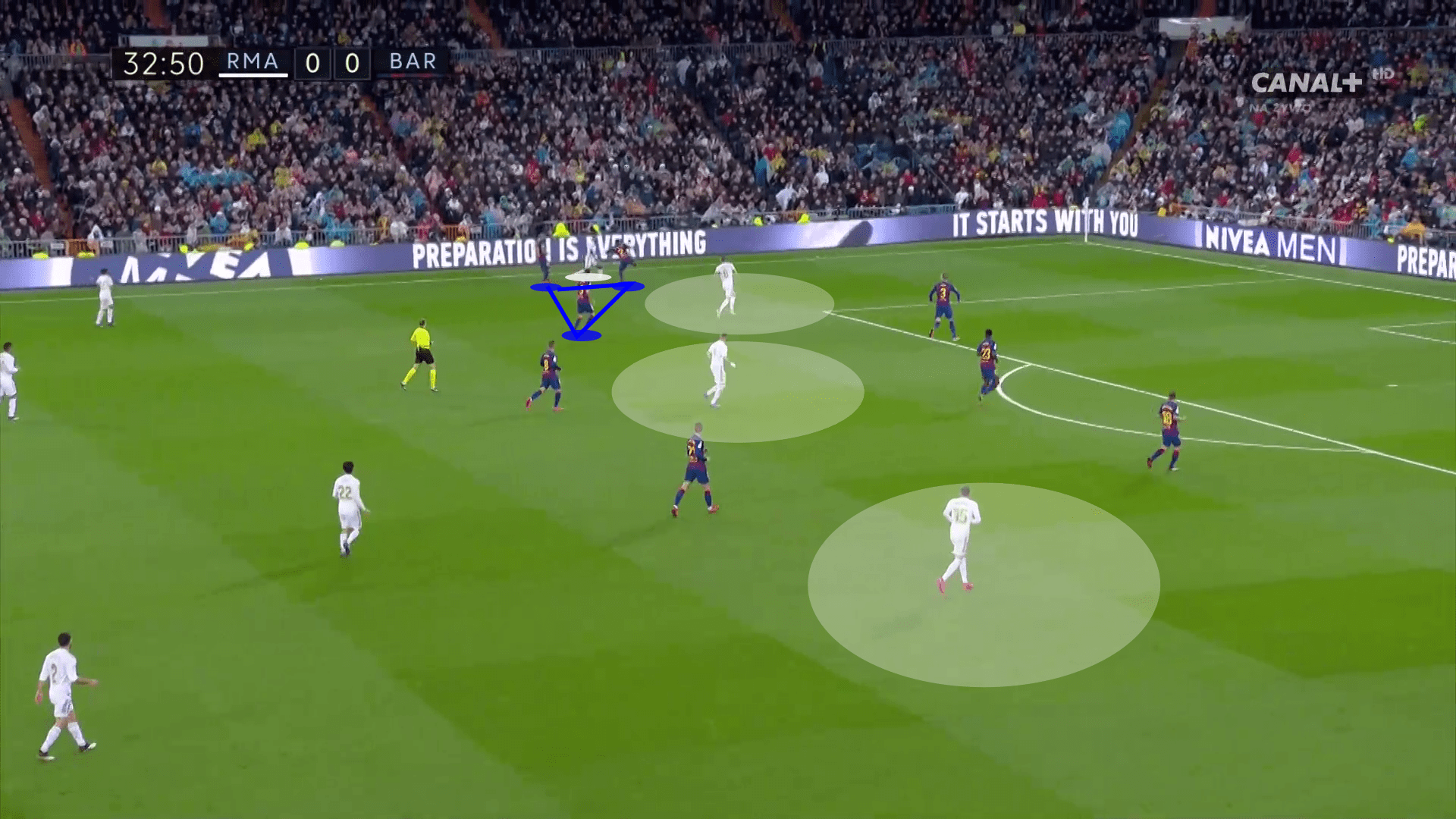
This also had an important influence defensively. By bringing Vidal back and forcing Semedo to stay deep, Barcelona struggled to capitalise on the defensive vulnerabilities of Marcelo as they were positioned so deeply that they could not counter in time to fill the spaces that he was leaving behind. Whilst he did not get back too often, with just eight defensive duels, he did defend from the front with five of his six recoveries taking place in the opposition half.
Barcelona on the counter
One of Setién’s major pre-match decisions came with the choice between fielding Braithwaite or Vidal as the third attacker, with the Chilean midfielder persuading the coach to pick him. However, the result was a slow and turgid attack which failed to aid the build-up play and slowed down the transition. Naturally a midfielder, Vidal would drop deep, often by instruction in order to provide cover for Semedo as Vinícius attacked. That left a significant weight on the shoulders of Antoine Griezmann as Messi dropped deep in order to provide a playmaker role.
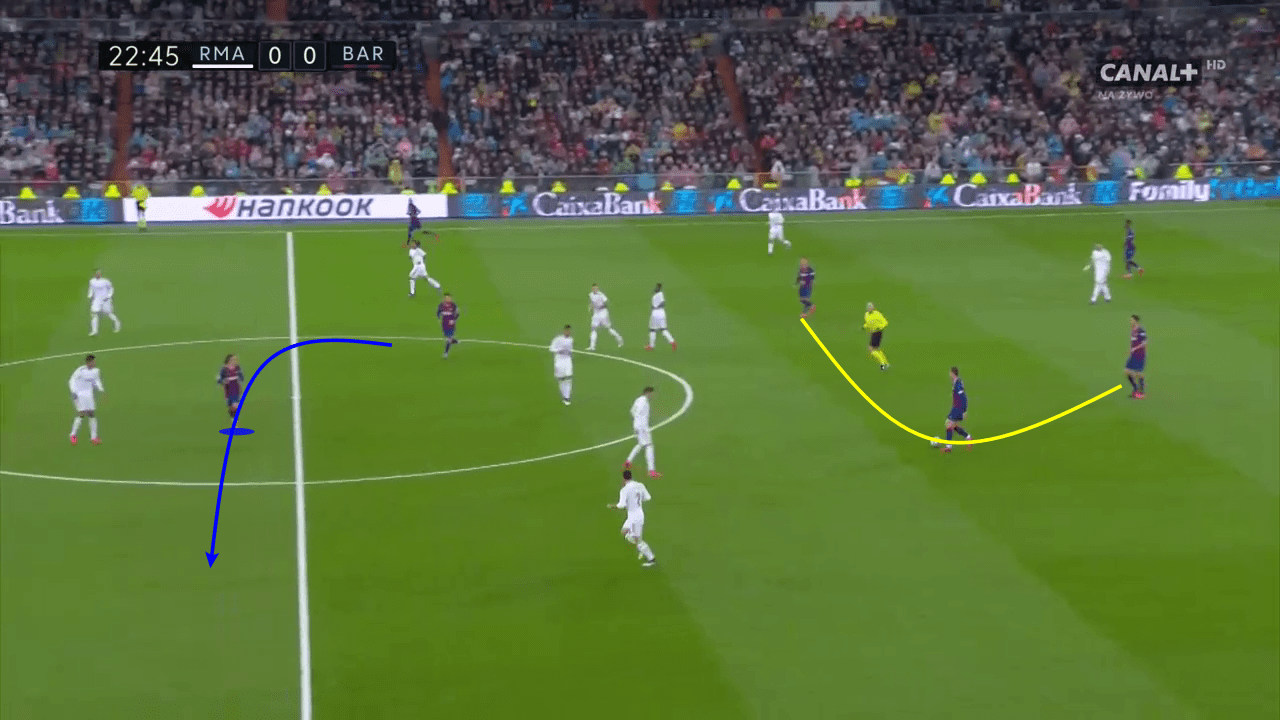
Griezmann was by far the most advanced player positionally in the Barcelona ranks and would often spend his time on the shoulder of the last man, only making runs deep late on when required. The result was that his movement was slow and lateral, rather than incisive. Despite receiving more passes than in any LaLiga game since Setién’s debut in the dugout against Granada and making as many as in any game other than Setién’s first two fixtures, he failed to complete a single pass in the final third and was often far too slow and meanderous in attack. Such lateral runs forced the midfield back on themselves without options, instead turning sideways or backwards and forcing themselves into a dead-end which only frustrated themselves.
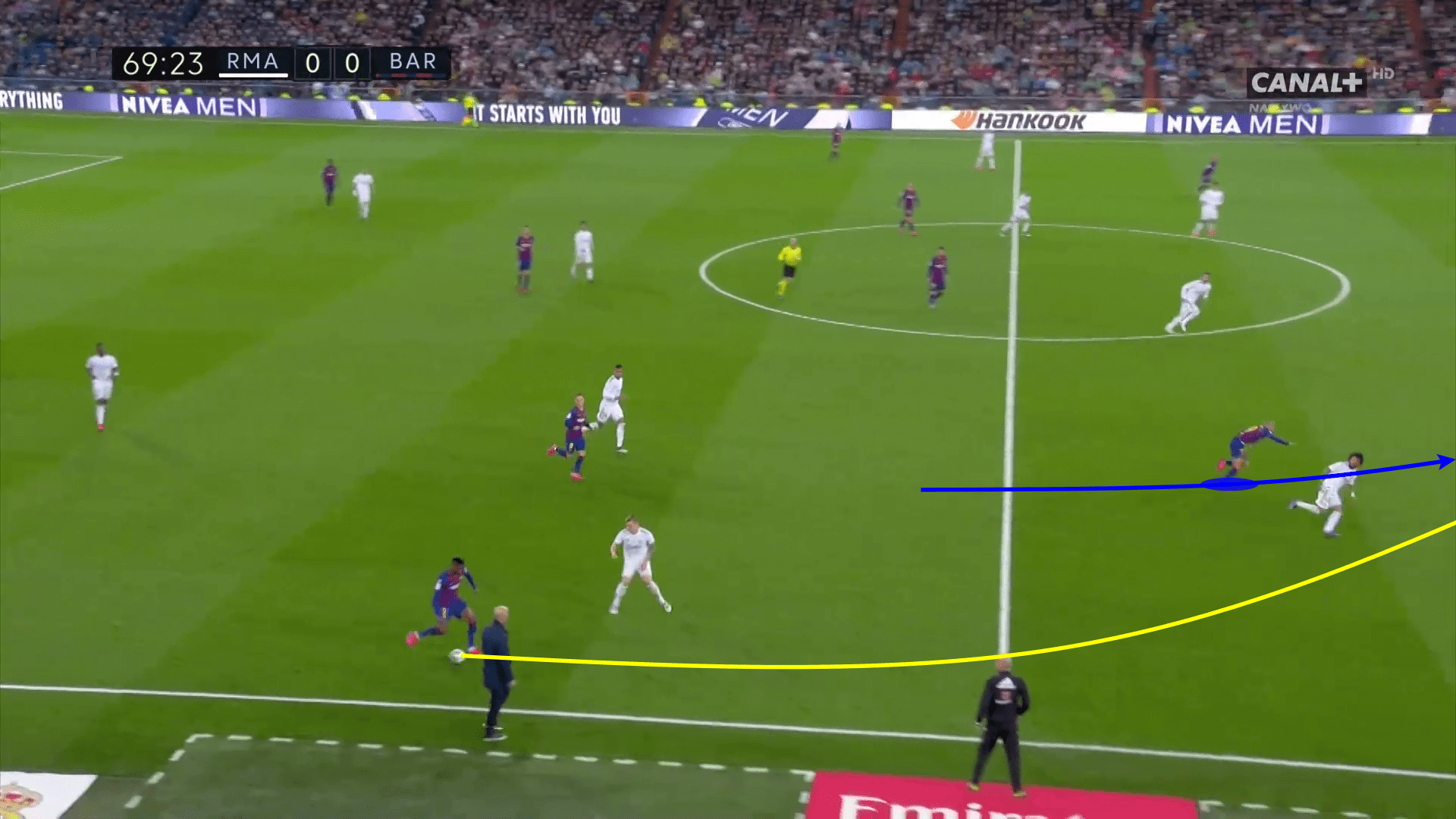
With Braithwaite’s introduction, this changed instantly. Almost immediately after coming onto the field of play, Braithwaite was making vertical runs into the gaps between the full-backs and central defenders, focusing on Marcelo. That created opportunities with clear passing opportunities for Semedo and the midfielders in front of him. Such penetration was exactly what Barcelona had been missing throughout and Braithwaite finally brought it into action, though it was too little too late.
Messi’s disappearing act
One of the major talking points after this fixture was the way in which Messi was nullified by Real Madrid. Only once in 2020 has he recorded a lower xG in any fixture than the 0.26 recorded against Los Blancos, failing to complete a single cross and also reducing his season average for completion by over 20%. In a lacklustre display, Messi was not only ineffective off the ball but also on it, struggling to bring other players into the game as can be noted by his statistic of just one shot assist, compared to an average of 2.29 per game.
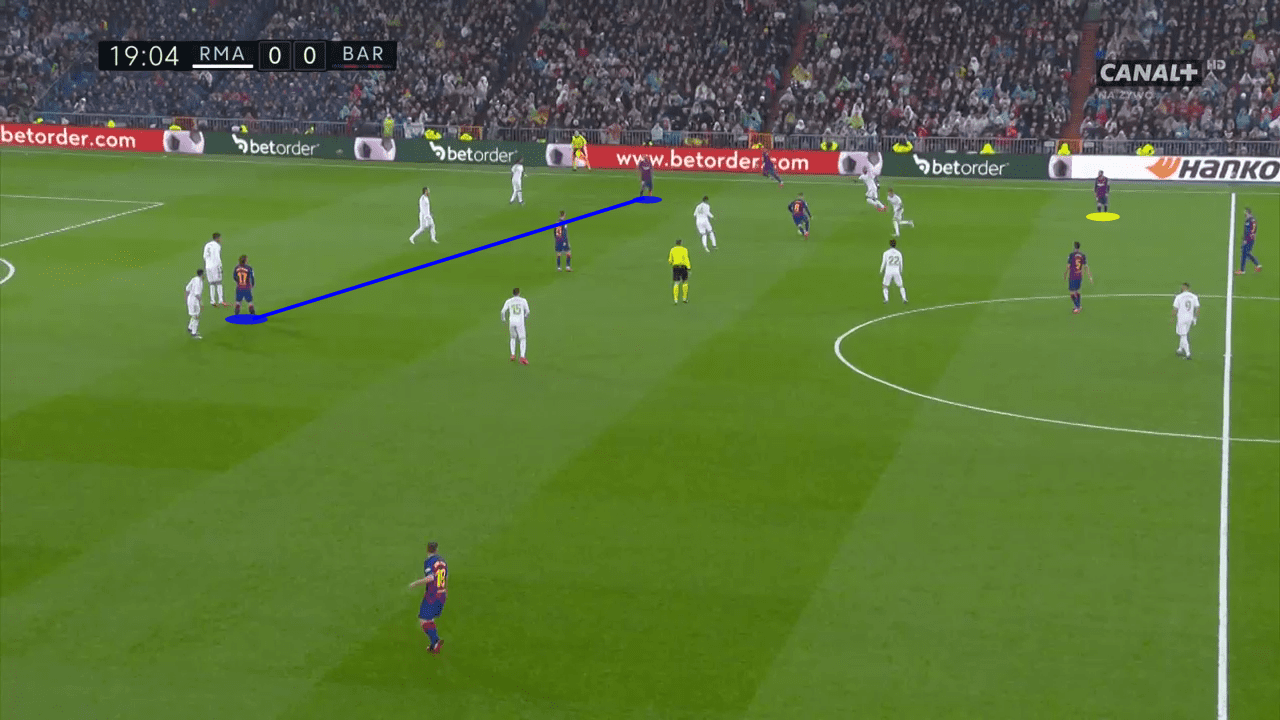
As can be seen above, Messi’s major issue was that he dropped far too deep, far too often. In the above example, Barcelona looked to spring a rapid counter-attack through Arthur in the midfield, Busquets setting him up. As he transitioned, the only options available were a static De Jong, a static front two of Vidal and Griezmann and the overlapping Semedo. The challenge came in that as Semedo returned the ball to Arthur, he looked for Messi as a passing option in the gap between midfield and attack, only to find that he was 30 yards behind him on the halfway line. Such slack movement off the ball was symbolic of the struggles that Messi has faced in recent weeks and never more so than in this Clásico.
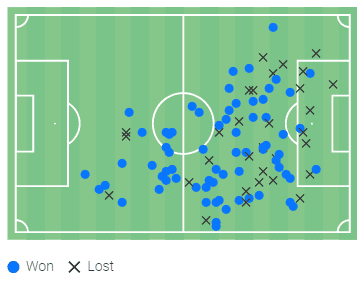
Despite that, it is also important to recognise the role that the Real Madrid midfield played. When Messi did move into more advanced positions in order to create something, Casemiro was always on his toes. In fact, only three of his 10 touches in the box were successful. With this press and challenging coming from Casemiro in central areas, Messi was soon forced wide and deep into a vicious cycle of removing himself from the game. Whilst it may have been partly down to the way that Real Madrid controlled him and looked to force Messi to play in areas they wanted him to, he also struggled to free himself from those shackles.
Conclusion
After a narrow first half in which Barcelona boasted 0.73 xG, 0.04 more than Real Madrid, they appeared to take their foot off the pedal just as Real Madrid upped the ante. In that second period, the gap between the teams was 0.64 xG. The high and effective press from Real Madrid prevented Barcelona from dominating the second half as they did in the first. Instead, the momentum was on their side and they continued to build up the offensive threat as Vinícius tore up Bacelona’s defensive structure with his vertical, direct and dangerous style. With the one point lead and the title in LaLiga’s hands, Real Madrid know that they should be able to see out their campaign with success if they can maintain the key strengths of this performance consistently.




Comments